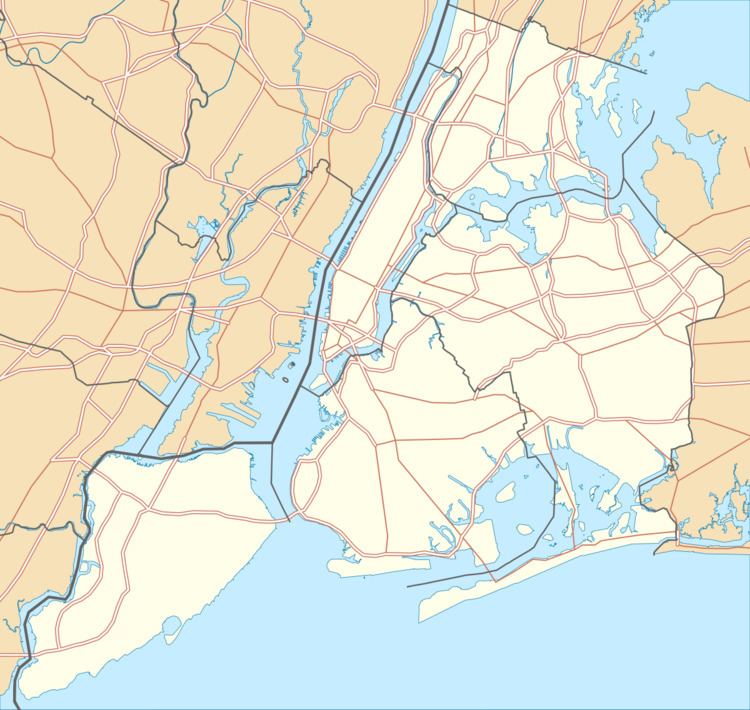Area less than one acre NRHP Reference # 09000942 Phone +1 212-639-9675 | Built 1962–1964 Address Corona, NY 11368, USA Added to NRHP 20 November 2009 | |
 | ||
Architect Johnson, Philip, Lev Zetlin Similar | ||
Nyc 1964 1965 worlds fair new york state pavilion drone phantom 3 quadcopter
The New York State Pavilion is a historic world's fair pavilion at Flushing Meadows–Corona Park in Flushing, Queens, New York. The New York State Pavilion was designed for the 1964 New York World's Fair by architects Philip Johnson and Lev Zetlin, and built between 1962 and 1964.
Contents
- Nyc 1964 1965 worlds fair new york state pavilion drone phantom 3 quadcopter
- It s my park new york state pavilion 1964 world s fair
- Architecture
- After the fair
- Restoration plans
- References
It s my park new york state pavilion 1964 world s fair
Architecture
The pavilion consists of three components of reinforced concrete and steel construction: the "Tent of Tomorrow", Observation Towers, and "Theaterama":
After the fair
The New York State Pavilion was one of two pavilions retained for future use; the other one was the United States Pavilion building. No reuse was ever found for the U.S. Pavilion however, and it became severely deteriorated and vandalized; it was ultimately demolished in 1977.
The New York State Pavilion was used for TV and movie sets, such as an episode of McCloud; for The Wiz; part of the setting (and the plot) for Men in Black; and the centerpiece for the Stark Expo in Iron Man 2. It was also the venue for rock concerts, as part of the Singer Bowl Festival in 1969, which included the Grateful Dead, Joe Cocker, Santana and other headline groups of the era (see for poster ads). It was also the filming location in 1987 for the video clip for the debut single by They Might Be Giants, Don't Let's Start.
In the decades after the fair closed, it was an abandoned and badly neglected relic, with its roof gone and the once bright floors and walls almost faded away. Once the red ceiling tiles were removed from the pavilion in the late 1970s, for safety reasons, the terrazzo floor was subject to the elements and was ruined. In 1994, the Queens Theatre took over the Circarama adjacent to the towers, and continues to operate there, using the ruined state pavilion as a storage depot.
For the 50th anniversary of the World's Fair, on April 22, 2014, the long-shuttered New York State Pavilion was opened to the public for three hours. Because of the pavilion's state of decay, visitors were required to wear hardhats.
Restoration plans
Some conservation and restoration efforts were demonstrated in 2008 by researchers from the University of Pennsylvania, and a handful of local groups are advocating to raise funds to complete the restoration of the terrazzo floor. The pavilion was listed on the National Register of Historic Places in 2009.
In the fall of 2013, New York City's Department of Parks and Recreation announced plans to restore the pavilion with new landscaped paths and event spaces at an estimated cost of $73 million, as opposed to the $14 million cost to demolish the structure.
Renewed interest was shown in the pavilion's restoration in early 2014, the 50th anniversary of its opening.
In July 2014, the pavilion received about $5.8 million for restoration. The New York Mets also donated some money for the preservation effort. However, the pavilion was damaged the same month by arsonists.
In May 2015, the New York Structural Steel Painting Contractors Association, in conjunction with the New York City Parks department and members of the International Union of Painters and Allied Trades (District Council 9, Local 806), announced a project to repaint the rusty steel framework of the Tent of Tomorrow. After testing paint chips, the color "American Cheese Yellow" was selected as the best match for the original color. The majority of the labor was done by union trainees, and materials were supplied by the contractors, constituting a $3 million donation. All work was completed by August 15 of 2015.
